All about Birds
Rainbow Lorikeet: The Most Beautiful Companion Bird Ever
The Rainbow Lorikeet is a small, cute, and incredibly fascinating companion – and it’s also known as the Rainbow Bird.
Here’s everything you need to know about this rainbow-colored, intelligent, and amiable bird.
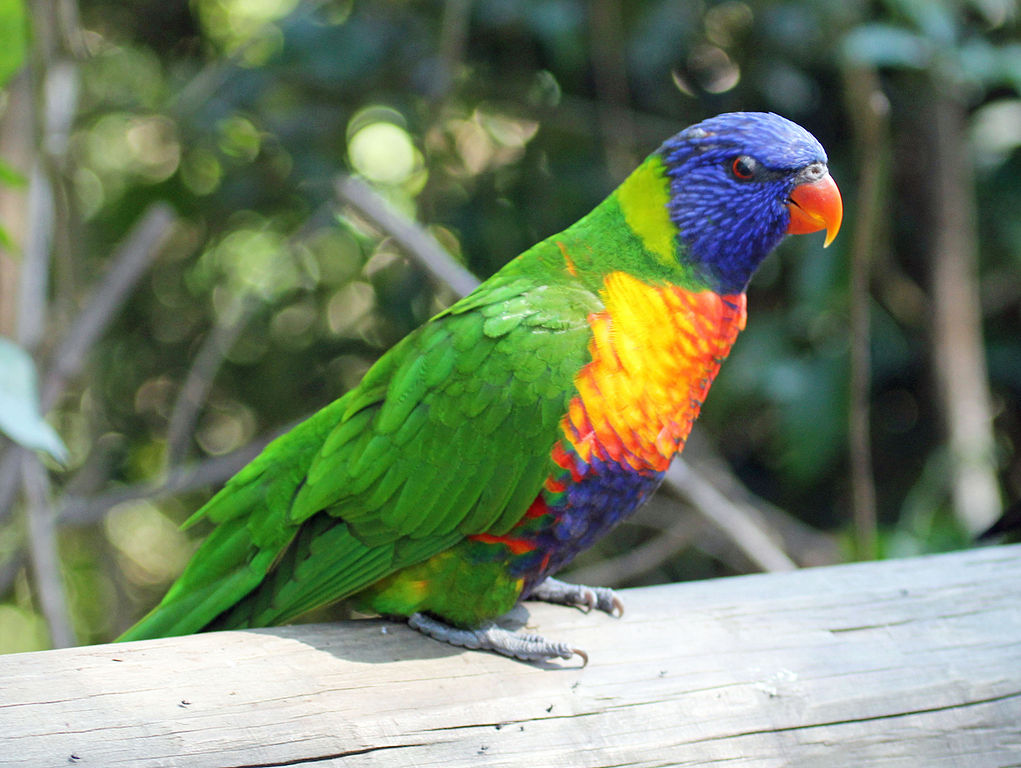
The Rainbow Lorikeet (Trichoglossus haematodus), popularly known as The Rainbow Lory, is unarguably one of the most beautiful and astonishing birds you’ll ever find.
They are generally small-sized birds, with multicolored feathers giving the bird an appearance of a rainbow.
The male and female sexes both look alike, but the varying color of their plumages makes for easy identification of the bird’s subspecies.
They are brightly colored birds with beautiful shades of red, green, violet, blue, yellow, and orange.
The Rainbow Lorikeet has a violet-blue head, orange-red upper breast, and a deep blue abdomen, with a mix of red.
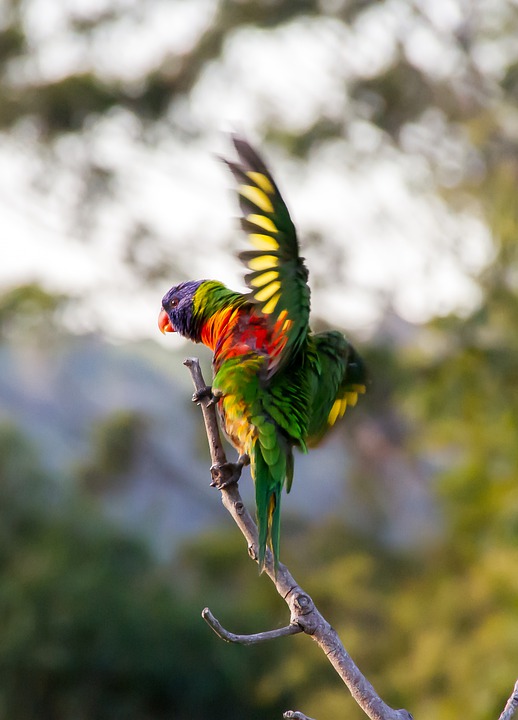
It has a green (usually bright) back, red beak, and greenish yellow tail.
If you’re looking for a beautiful and pleasant companion bird, then the Rainbow Lory (also referred to as Lory) is your best bet.
Rainbow Lories need special care, much more than other companion birds, due to their specific housing and dietary requirements.
However, the joy and color that comes with having them overwhelm the extra effort put into caring for them.
Quick Facts about the Rainbow Lorikeet
- The bird is more accurately classified as ‘lorikeet,’ due to its characteristic long, tapered tail typical of the lorikeet species. The tail of a ‘lory’ is typically shorter and rounder than that of a lorikeet.
- Rainbow Lories are arguably the sweetest and loveliest birds you’d ever meet. They have friendly personalities and entertaining antics.
- Rainbow Lorikeets require enough exercise to stay healthy, so they have to live in large cages and be allowed to play outside for more than 3 hours every day.
Interestingly, they can become depressed if they don’t get enough playtime.
- Rainbow Lorikeets are toy lovers, and they need plenty of them to keep their active minds engaged.
- To the nerve-rattling of many guardians, Rainbow Lorikeet sleeps on its back.
- Rainbow Lorikeets stay faithful to one partner their whole lives.
- The Rainbow Lorikeet is considered a pest in Western Australia.
Origin and Evolution of the Rainbow Lorikeet
The Rainbow Lorikeets are native to eastern Indonesia and Australia.
The species was abundant in Sydney until its population decline started in the late 1800s. In the mid 20th century, they were scarce in Sydney, but now they can be found in high populations.
They usually move in large flocks in the coastal regions of eastern and northern Australia.
The bird’s natural habitat includes rainforests, woodlands, and any well-treed habitat – even in urban environments.
Behavior
Rainbow Lorikeets as Pets
If you are looking for a friendly bird, then you’ll find one in the Rainbow Lory species.
Rainbow Lories are far from being shy, with an enthusiastic disposition to play when their guardian is around. Their entertaining antics will blow you off, and might even seem too much if you’re used to an unfriendly bird.
The Rainbow Lorikeet loves every minute it spends out with humans, and it is likely to get depressed if left on its own in the cage for too long.
The bird is clever and can get mischievous, so you’ve to be on the lookout for it.
Generally, they make good pets for guardians who provide them care, and are willing to spend enough time with them.
Rainbow Lories, like every other parrot species, love to play with toys. They need a good stock of toys to keep their ever-active minds engaged.
However, the guardian has to ensure the toys are made of safe destructible woods that the birds can chew on.
Speech and Sound
The Rainbow Lorikeets are not only renowned for their striking colors but also their loud, chattering sounds.
Yes, you can call them noisy, just like every other lories subspecies. They have a high-pitched voice, with a squeaky bark.
Amazingly, these birds love to talk, and they are quick at picking up words which they, in turn, speak clearly.
Breeding Behavior of Rainbow Lorikeets
The female Rainbow Lory lays its eggs on decayed wood, after chewing out a hollow portion of it.
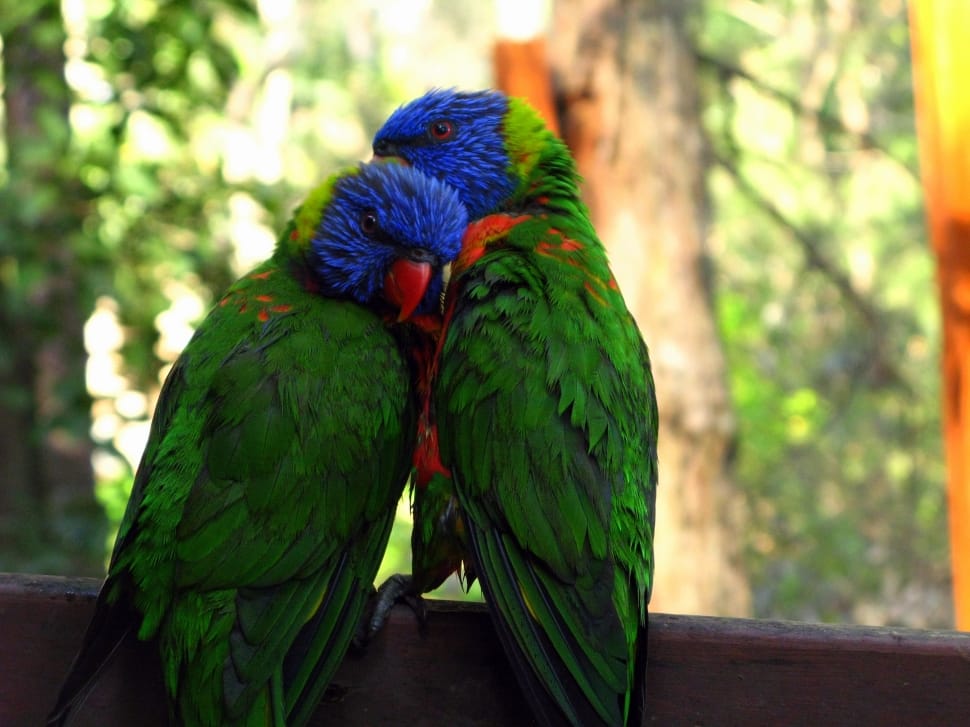
The incubation of the eggs lasts for about 23 days, and only the female Rainbow Lorikeet is involved.
The male assists in building the nest and feeding the young Rainbow. The young Rainbow Lorikeet spends about 45 days in the nest before being allowed to attempt its first flight.
Rainbow Lorikeets and Companionship with Each Other
Although Rainbow Lorikeets have a friendly disposition, they don’t get along with each other.
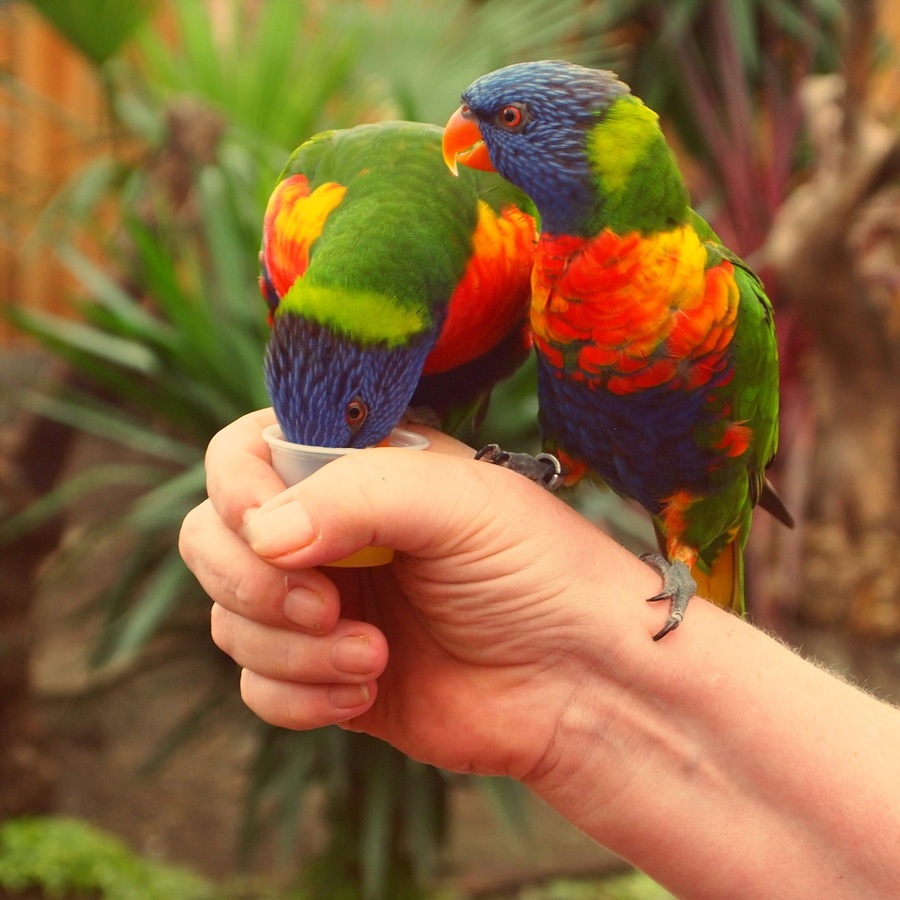
While they are naturally vicious to other species, they can also attack birds of their very own species.
As a result of this, they are never left alone with other birds without supervision.
They love their space and would do just about anything to protect it.
However, the Rainbow Lorikeets often flock with Scaly-breasted Lorikeets, and sometimes with Little Lorikeets.
Dealing with Predators

Since Rainbow Lorikeets live out in the wild, they have several predators to deal with.
Diamond pythons, peregrine falcons and brown hawks are some of the most powerful predators Lorikeets have to deal with.
Rats are also dangerous predators to Lorikeets, preying very often on them.
To fend these predators off, Rainbow Lorikeets move in large groups, maintaining vigilance.
At the sight of a predator, a Lorikeet makes a loud sound, and the birds all flee.
Lifestyle and Health
Rainbow Lorikeets generally live a sedentary lifestyle but are usually forced to move by seasonal flowering or plant fruiting.
Diet and Feeding
This distinct parrot subspecies naturally love to feed on pollen, nectar, seeds, fruits, and certain insects. This is why they are always seen foraging on trees and shrubs.
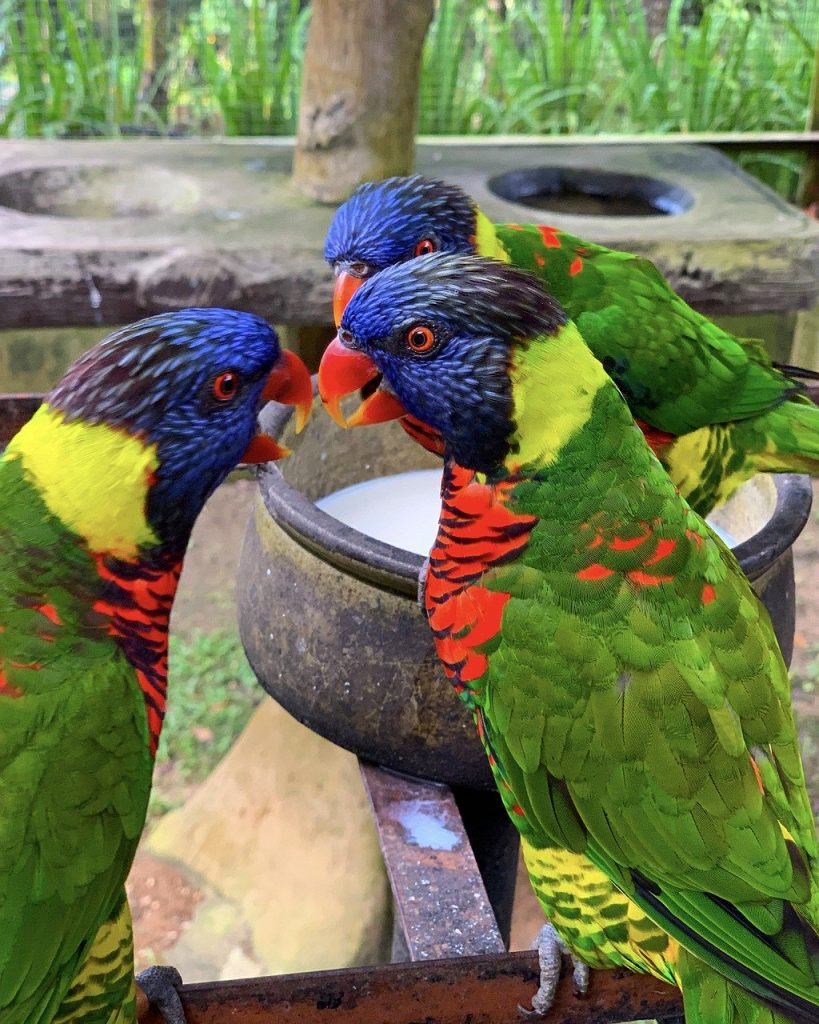
The main diet of Rainbow Lorikeets is fruit, which includes oranges, apples, bananas, and melons.
Since they naturally love the nectar of flowers, feeding them with one formulated with a mix of lory-diet powder is a great choice.
Rainbow Lorikeets require a special diet because of the peculiar nature of their gizzard that is unable to crush seeds.
Some of them feed on seeds; however, their main diet consists of fruits.
Pollen is a major constituent of the Rainbow Lorikeet’s diet, supplying the bird with a rich amount of protein. The birds feed on nectar from Proteaceae, Myrtaceae, and Xanthoroaceae.
It sometimes feeds on small insects, such as wasps, weevils, beetles, ants, and thrips, as well as larvae, such as weevil larvae, fly maggots, and moth larvae.
Lories feed basically on a liquid diet, causing them to release loose droppings in a sprayed manner.
As a result, the birds’ guardian or owner usually has lots of cleaning to do.
The Rainbow Lorikeet During the Day
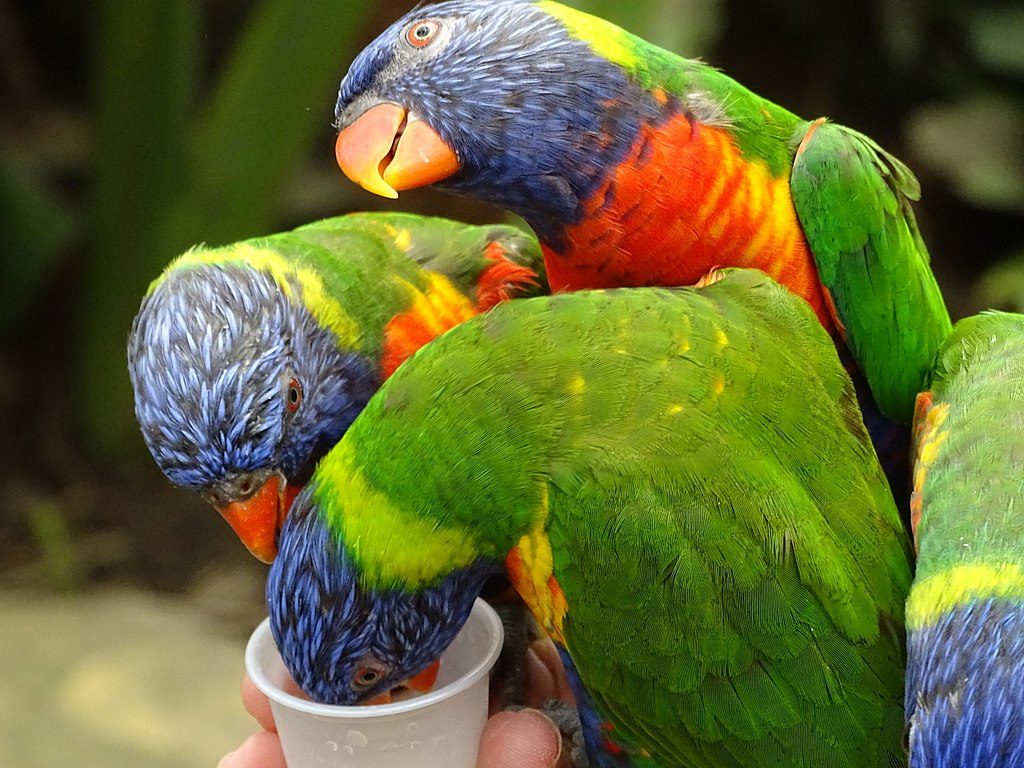
The Rainbow Lory feeds during the day, actually spending over two-thirds of their time feeding.
The bird requires 2 to 5 hours of feeding to meet its daily nutritional requirements.
When the weather becomes hot, the Rainbow Lorikeet takes a break from feeding, and this usually happens at midday.
Major Health Concerns
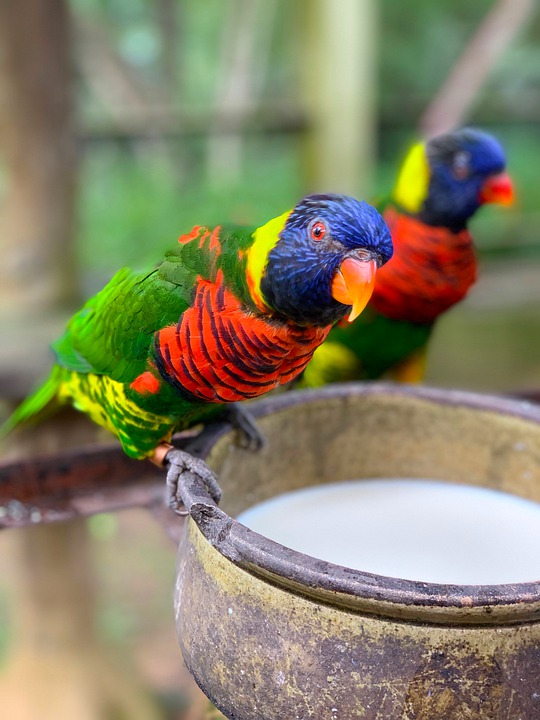
A Rainbow Lorikeet’s food is very prone to bacterial infection, leading to food spoilage.
This is a significant health concern for the entire lory species, and as a guardian, you must change the bird’s food often enough.
Food spoilage happens faster in warm weather, as the temperature is conducive for bacterial growth.
Fruits also rapidly spoil when left in the cage for a couple of hours.
Rainbow Lorikeets can suffer from hemochromatosis, aspergillosis, pneumonia, and nutritional deficiencies.
Life Expectancy
Rainbow Lorikeets live up to 30 years, but the typical life expectancy range is 20 to 30 years. Most lories don’t live up to 30 years.
Population

There is not enough information about the bird’s current population. Rainbow Lorikeet’s Conservation status is Least Concern, which means its population is not on a worrying decline.
The species has benefitted hugely from the abundance of flowering and fruiting shrubs and trees. The bird’s extent of occurrence is 3,810,000 km2.
Other Physical Characteristics
Size and Weight

Rainbow Lorikeets are typically small birds, with an average size of 30cm.
The species minimum length is 28cm, while the maximum is 32cm.
Their wings are about 15cm in length. The bird weighs an average of 133g.
Although both sexes look similar, the female is smaller, with a rounder bill.
Feathers
Rainbow Lorikeets have colorful feathers, with beautiful shades of red, green, violet, blue, yellow, and orange.
Habitat
The Rainbow Lorikeet’s most favorable habitats are treed habitats, such as woodlands, rainforest, heath, open forest, mallee, watercourses, and mangroves.
They also find a home in urban areas with enough trees, such as parks, gardens, and orchards.
Distribution of the Rainbow Lorikeet
The Rainbow Lories can be found in Northern Australia, from Kimberly to Cape York.
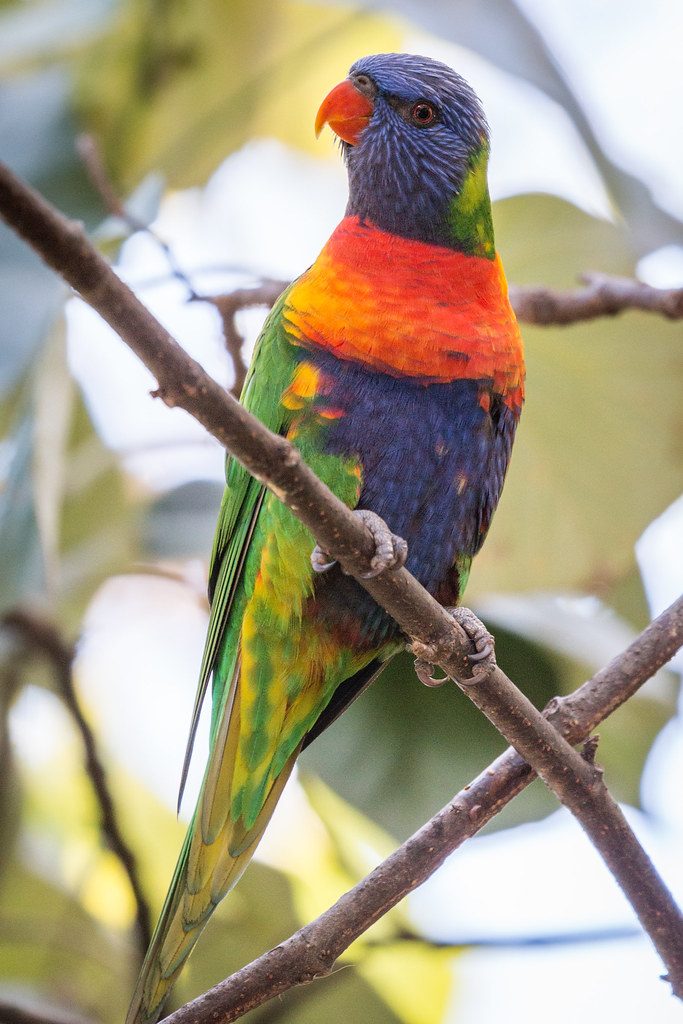
In Eastern Australia, they can be found along the East Coast to South Australia, particularly in the Eyre Peninsula.
They can also be found in Papua New Guinea, Vanuatu, Indonesia, New Caledonia, and the Solomon Islands.
Flowering and fruiting patterns control the species distribution, reproduction, and community.
They can sometimes be nomadic, relocating temporarily to where there are flowering food resources.
However, they are sedentary birds that can live in a particular place their whole lives if there are sufficient food resources.
How Does Rainbow Lorikeet Protect Itself?
The species can fly very high at great speeds and can maneuver their ways between trees to escape predators.
The birds tend to move in flocks, sometimes with up to 20 birds, with each on a lookout for predators.
Housing and Enclosure Requirements
The Rainbow Lorikeet’s cage must be large enough so that the bird can fly and play around in it.
The cage should be put in a location where the walls and floors can easily be cleaned because of the bird’s tendency to be messy.
Alternatively, you can cover your walls with plastic sheets to protect them from the bird’s mess.
Management
Rainbow Lorikeets are considered pets, capable of damaging common backyard fruit crops. It is therefore necessary to properly manage the birds to control the damages they are likely to cause.
In some parts of Australia where Rainbow Lorikeets don’t occur naturally in the wild, releasing them into the wild is not allowed.
As a matter of fact, Rainbow Lory’s management activities must be in compliance with the Animal Welfare Act of 2002.
FAQs
How much does a Rainbow Lorikeet cost?
The Rainbow Lorikeet cost between $600 and $1000
Why is the Rainbow Lorikeet a pest?
The colorful Rainbow Lorikeet is officially considered a major agricultural pest in Western Australia due to the significant damage it causes to major crops in the process of feeding on them.
They are pests of apple, grape, vegetable crops, pear, cherry, stone fruit, and field crops like sorghum.
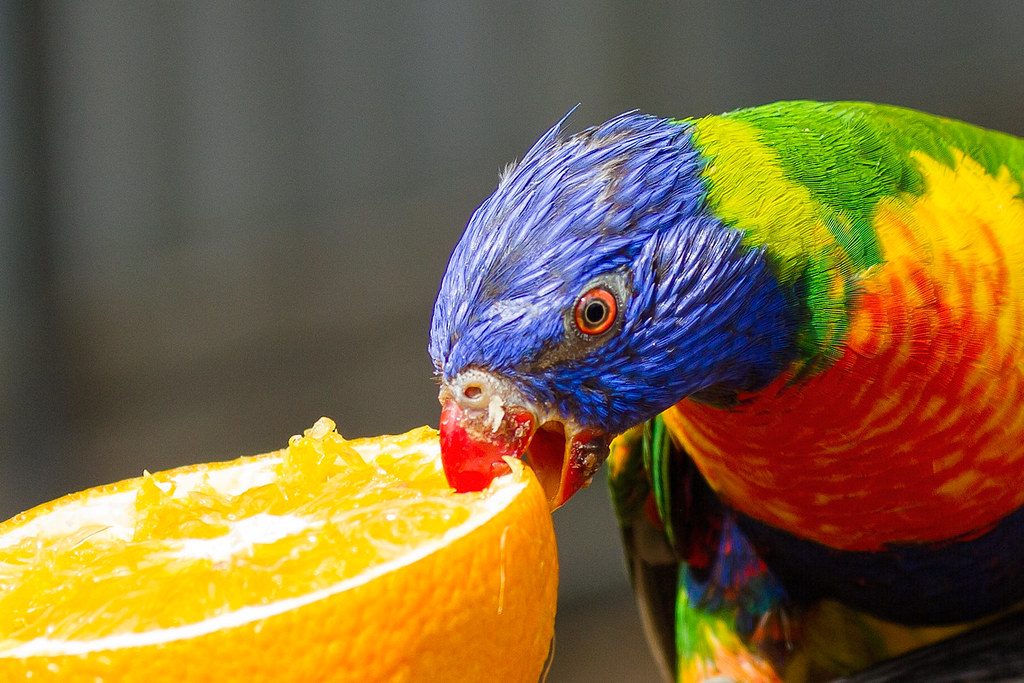
Rainbow Lories cause damage to garden flowers and fruits, pollute the environment with their messy droppings, and fight with native birds.
They feed on backyard grapes, apples, cherries, figs, passionfruit, pears, guavas, peaches, mangoes, and other common fruits.
Besides feeding on and damaging these fruits and flowers, they exhibit their territorial behavior over them, barring the native birds’ access.
Also, the Rainbow Lorikeets are pathogens of Psittacine Beak and Feather Disease and pose a risk to the entire parrot species.
What does a Rainbow Lorikeet eat?
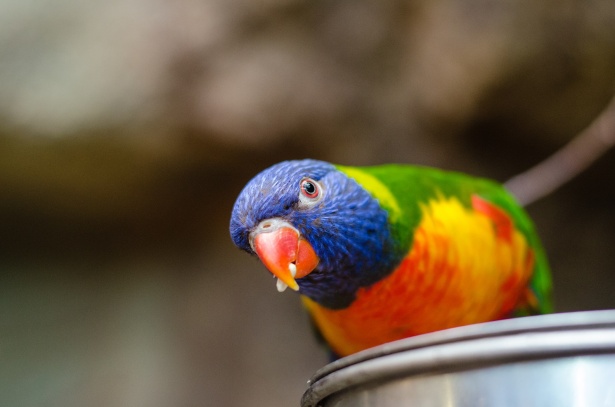
Pollen is a major constituent of the Rainbow Lorikeet’s diet, supplying the bird with a rich amount of protein.
The bird feeds on nectar from Proteaceae, Myrtaceae, and Xanthoroaceae.
It sometimes feeds on small insects, such as wasps, weevils, beetles, ants, and thrips, as well as larvae, such as weevil larvae, fly maggots, and moth larvae.
How do you tell the difference between a male and a female rainbow lorikeet?
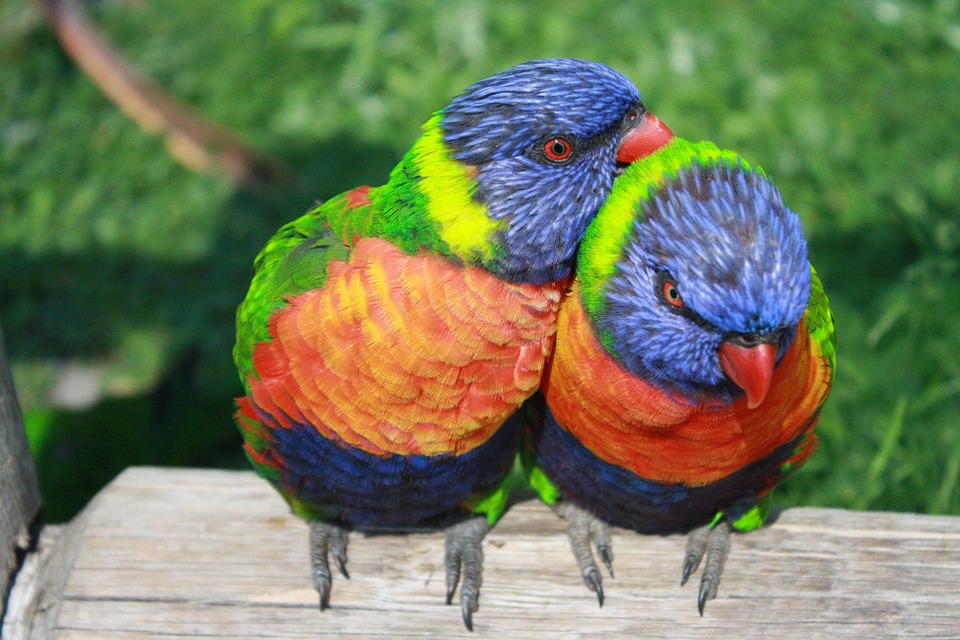
The female Rainbow Lorikeet is smaller than the male, with a shorter, rounder bill.
Do rainbow lorikeets talk?
Yes, they do. The Rainbow Lorikeets are quick to pick up words and phrases and are very enthusiastic about repeating them – just like every other parrot.
What Should I Not feed Rainbow Lorikeets?
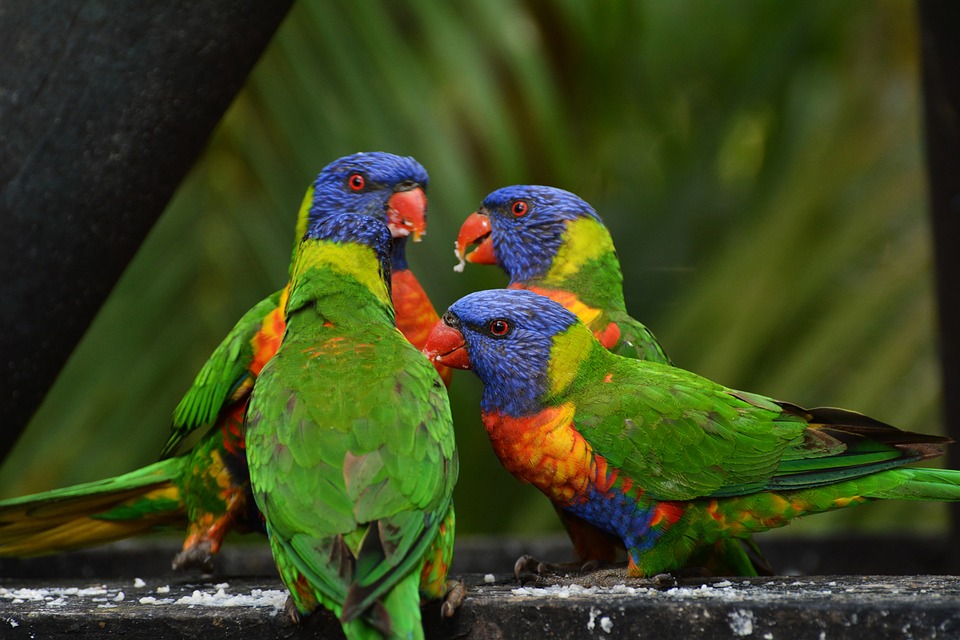
The Rainbow Lorikeet, unlike other Lories, does not have a strong gizzard to chew solid food. So feeding the bird solid food or nuts is not advisable.

